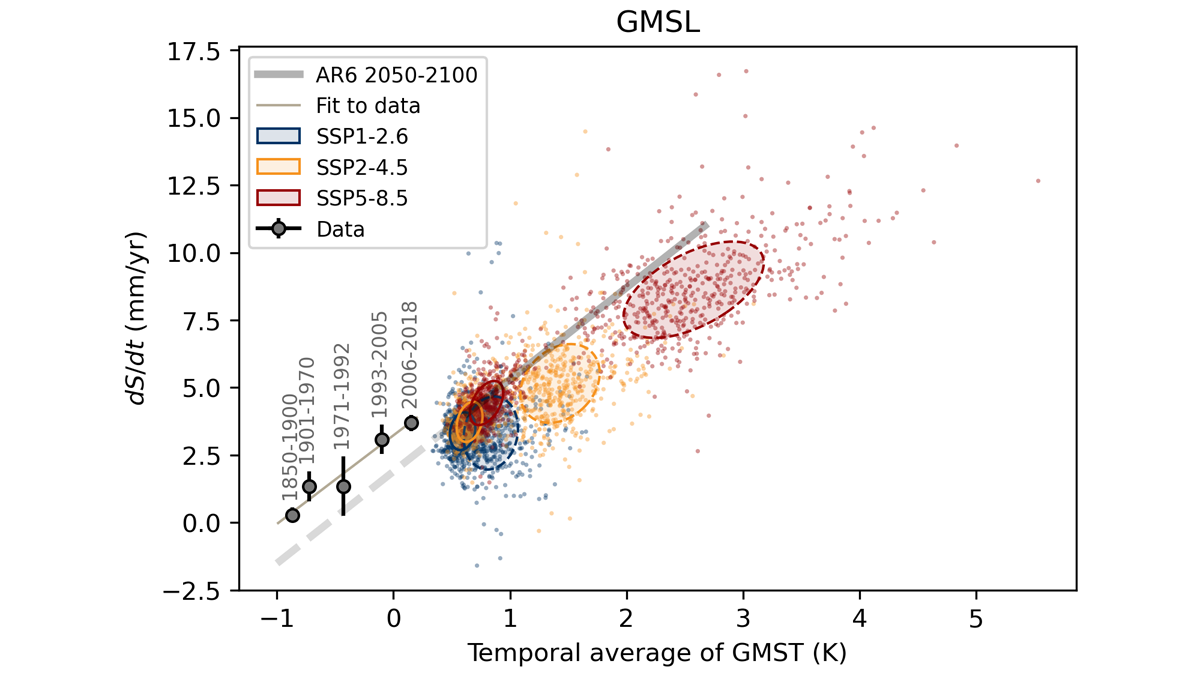Editors’ Highlights are summaries of recent papers by AGU’s journal editors.
Source: Earth’s Future
Global sea level rise is one of the most insidious consequences of climate change. Narrowing the uncertainties on how much and how fast sea level will rise in the years to come has been a major goal of the climate community.
Grinsted et al. [2022] take a step forward by bringing together data and models to more tightly constrain the connection between global warming and sea level rise. The authors show that rates of global mean sea level rise due to melting ice sheets, glaciers, and ice caps, and to ocean thermal expansion exhibit linear relationships with global mean surface temperature.
Data of the recent past and simulations of the future under a variety of scenarios mostly paint consistent portraits of these “transient sea level sensitivities.” Yet, an important exception is this—the observations suggest that the Antarctic Ice Sheet may be more sensitive to warming than the models anticipate, meaning that current projections of future global mean sea level rise may be too low. To stem the tide of future sea level rise, the authors argue, requires that global mean surface temperatures be reduced to near-preindustrial values.
Citation: Grinsted, A., Bamber, J., Bingham, R., Buzzard, S., Nias, I., Ng, K., & Weeks, J. (2022). The Transient Sea Level response to external forcing in CMIP6 models. Earth’s Future, 10, e2022EF002696. https://doi.org/10.1029/2022EF002696
—Christopher Piecuch, Associate Editor, Earth’s Future

